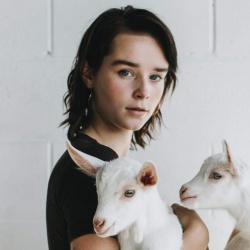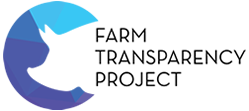News & Media > Editorials > 5 Myths About Animal Use in Fashion
5 Myths About Animal Use in Fashion
The exploitation and slaughter of animals in the fashion industry is serious. While the fashion industry is often seen as frivolous, not only can it be a source of creativity and an opportunity for self-expression, it can sometimes even mean life or death.
Each year, an inconceivable number of foxes, coyotes, raccoon dogs, rabbits, minks, chinchillas, crocodiles, alligators, snakes, lizards, ostriches, cattle, sheep, ducks, geese and individuals of other species lose their lives, and are transformed into clothing, shoes, bags and other accessories that humans wear.
Yet, it's not uncommon for people to have little understanding about the abuse of animals for fashion. To counteract this, let's break down five myths about the fashion industry and it's treatment of sentient, non-human beings.
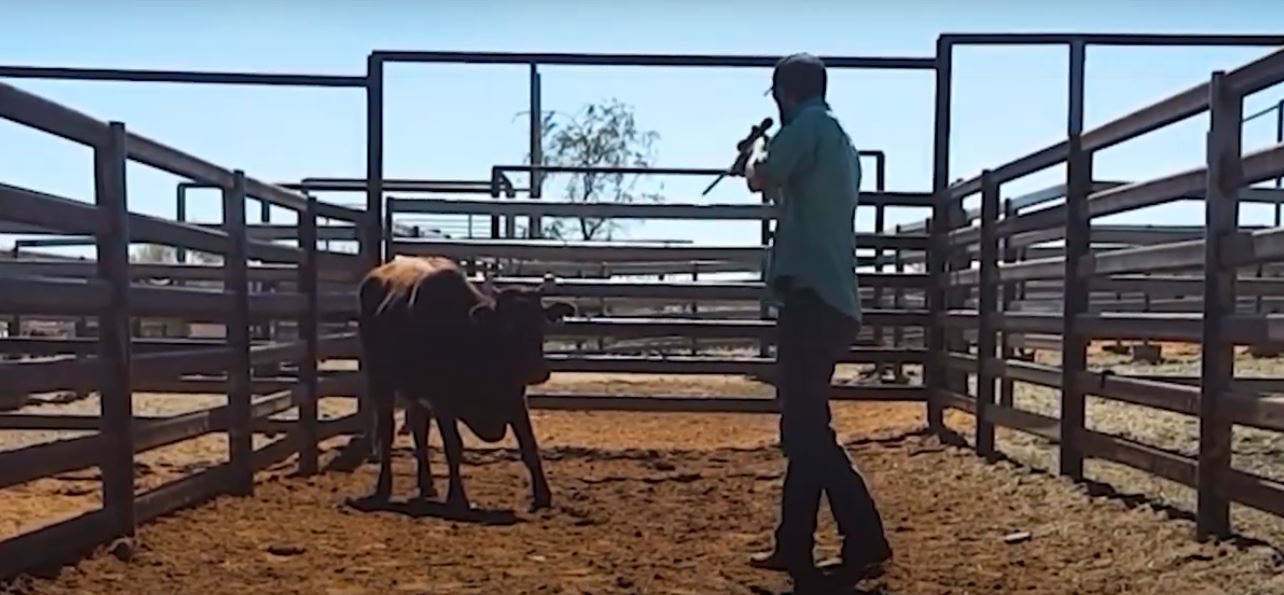
A cow being shot with a rifle, from a Sentient investigation.
ONE: Leather is just a by-product, and doesn't contribute to animal harm
When people refer to leather as a 'by-product', what they mean to suggest is that it is of little to no financial value to an industry that is built upon the slaughter of cows and calves. This argument is used to protect the leather industry from accountability, allowing them to avoid the cruelty that exists behind their products.
In reality, leather is a 'co-product'. This is because the skins of cattle are tanned and processed into leather, because they are valuable. Leather production is not a recycling or waste-reduction initative of the beef and dairy industries, but a profit-maximisation effort. The global leather industry is set to be worth $128.61 billion USD by 2022.
This means that every calf skin leather bag and every cow skin leather boot helps to fund the slaughter of these individuals.
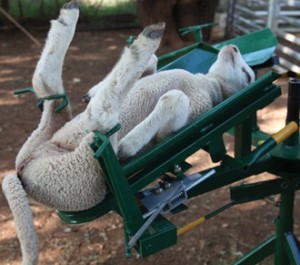 A lamb in a 'cradle' about to have their tail cut off.
A lamb in a 'cradle' about to have their tail cut off.
TWO: Sheep aren't killed in the wool industry
Another common claim is that wool is cruelty-free, so long as sheep are shorn well, and they are not mulesed - a practice where the skin on the backside of lambs is sliced off. For this reason, there are plenty of wool products that are now labelled as 'non-mulesed', and 'from happy sheep', or 'free from harm'.
These labels are utterly misleading. The most important thing we can all learn about the wool industry is that it is a slaughter industry. Meat and wool production is completely intertwined, with even the commonest wool-bearing sheep referred to as 'dual-purpose' by the industry. The supposed 'purpose' of these sheep is to be shorn for wool, until they are slaughtered so that their flesh can be sold as meat.
There are plenty of other painful practices involved in the wool industry, too. For example, it is perfectly legal, standard practice for young lambs to have their tails and testicles cut off with a knife, without any pain relief. Millions of newborn lambs also die every winter lambing season, largely due to the domino effects caused by industry dictating breeding patterns for profit.
Wool is a product of a slaughter industry that is cruel and unsustainable.
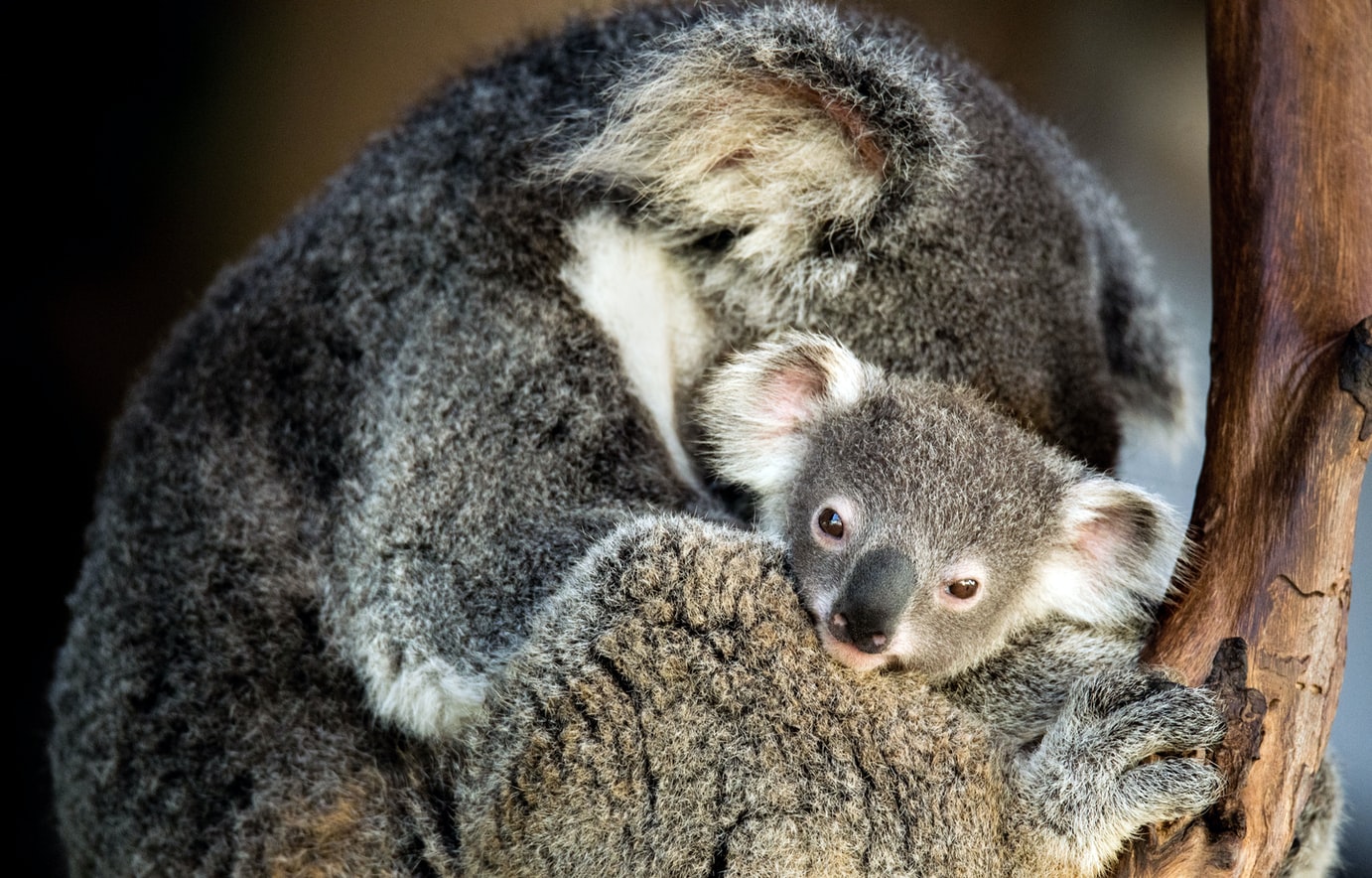
Koalas, who are negatively impacted by both the leather and wool industry in Australia.
THREE: Free-living animals, or 'wildlife', are not impacted by the fashion industry
It's not only farmed animals who are harmed by the fashion industry, but also those animals, who we often refer to as 'wildlife', who live freely out in nature.
The harms done to these animals are tied to the harms done to farmed animals, because animal agricultural systems tied to the fashion industry are unsustainable, land intensive, and polluting.
Did you know that more land is kept cleared and unnatural for animal agriculture than anything else in the world? This staggering fact is pertinent to animal use in fashion, because 80% of the deforestation of the Amazon is tied to cattle ranching for both beef and leather, and over 90% of deforestation in Queensland, Australia, is due to cattle and sheep farming, for flesh, skins and wool.
All of this environmental destruction takes a toll on the animals who live in these natural spaces. It is estimated that 50 million native animals, including koalas, are killed in Queensland and New South Wales each year due to habitat loss, and similar risks of species endangerment play out in the Amazon, and all across the world. If we are to protect free-living animals, we must choose materials that are more land-use efficient, like plant-based, recycled and lab-grown materials.
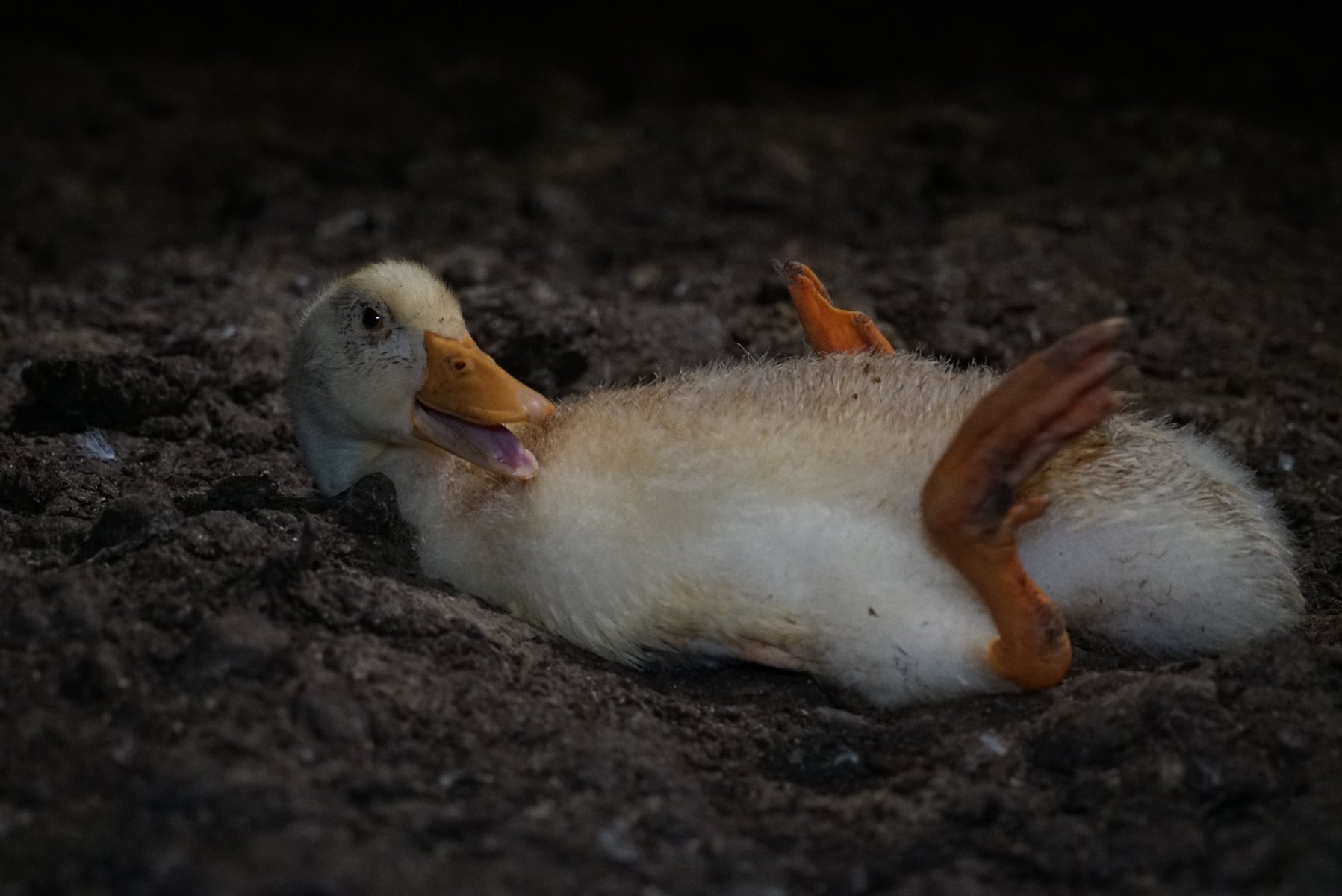
A duck in a factory-farm. Image by Farm Transparency Project
FOUR: Down that is certified as free from live-plucking is cruelty-free
Many people have heard of the distressing practice of live-plucking in the down industry. Ripping the feathers off live ducks and geese so that they can fill jackets and coats is, unsurprisingly, extremely harmful and can result in serious injury.
However, less considered is the fact that the alternative to live-plucked down is simply slaughtering birds first, and then plucking their feathers.
Killing animals for want and not need - and the array of animal-free options today removes need for so many - is not cruelty-free. Ducks and geese, even in supposedly 'high animal welfare' lawed countries, have their heads dunked into electrified water before a mechanical blade slices their throat open. Prior to this, almost all of these birds have spent their lives confined in factory-farms.
This sounds far less free from cruelty than advertisements like to tell us.
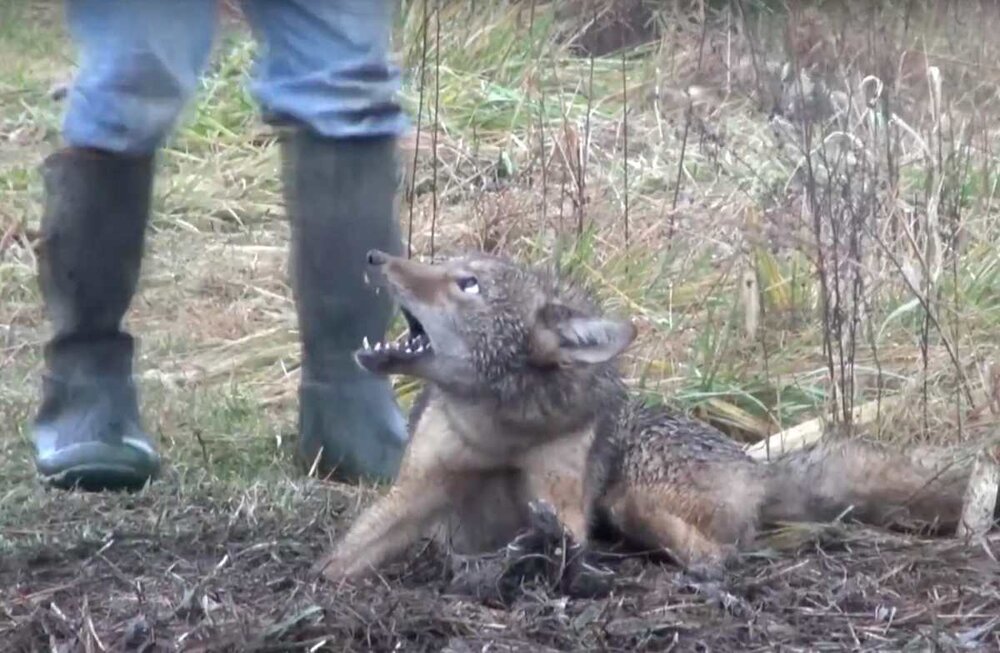
A coyote in a trap, who is about to be shot / a still from a Born Free USA investigative video.
FIVE: Animal-derived materials that don't come from factory-farms are ethical
What about the animal-derived materials that don't come from factory-farms, or any farms at all, then? Aren't they ethical? Brands that sell the skins of dead kangaroos, wild crocodiles, snakes, coyotes, raccoons and other species claim that being 'farm-free' means protecting the welfare of animals.
This is not an accurate claim. We know that the animals trapped by the fur industry have been documented chewing their own legs off and breaking their teeth in efforts to escape to freedom. Reporting also shows us that kangaroo joeys whose mothers have been shot for their skin and flesh are not only legally allowed, but recommended, to be killed by blunt force, such as slamming them against the back of a utility vehicle.
Yet again, labels like 'farm-free' are just another attempt to 'ethics-wash' the use of animal-derived fashion materials that are inherently unjust.
Today, there are so many alternatives to every animal-derived material. These are generally more sustainable and ethical, and are becoming more and more accessible. We have a responsibility to use these materials, rather than their animal counterparts.

